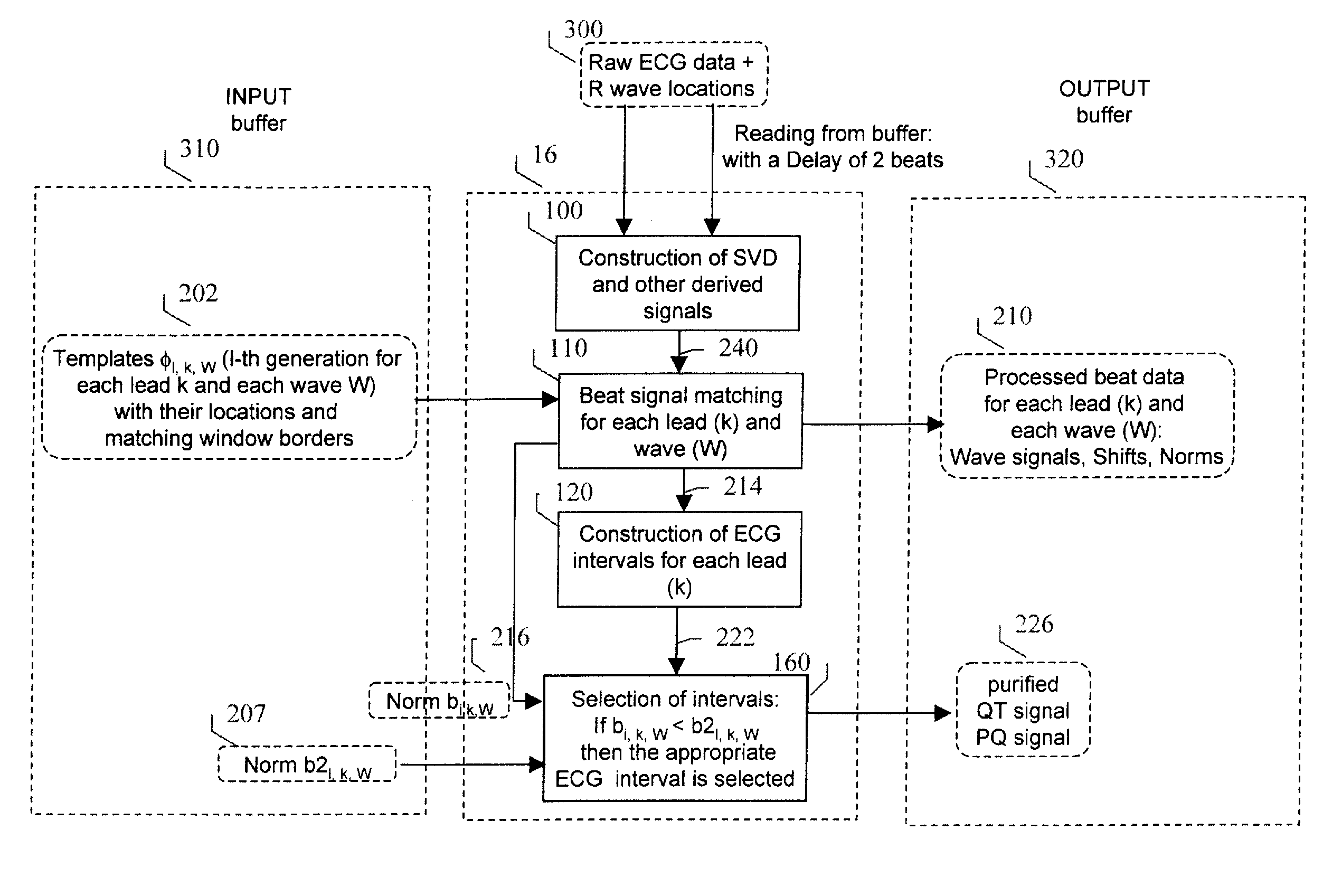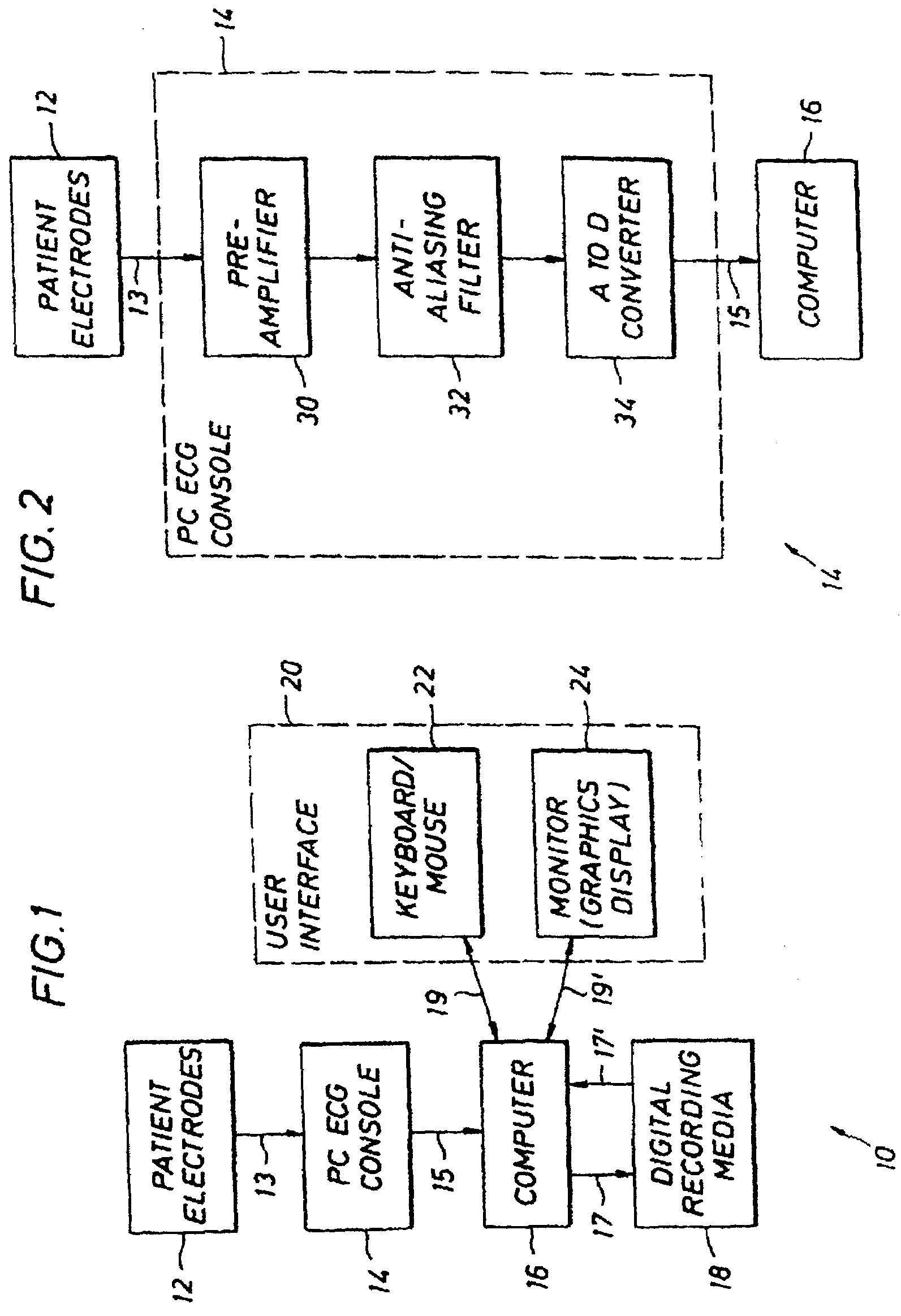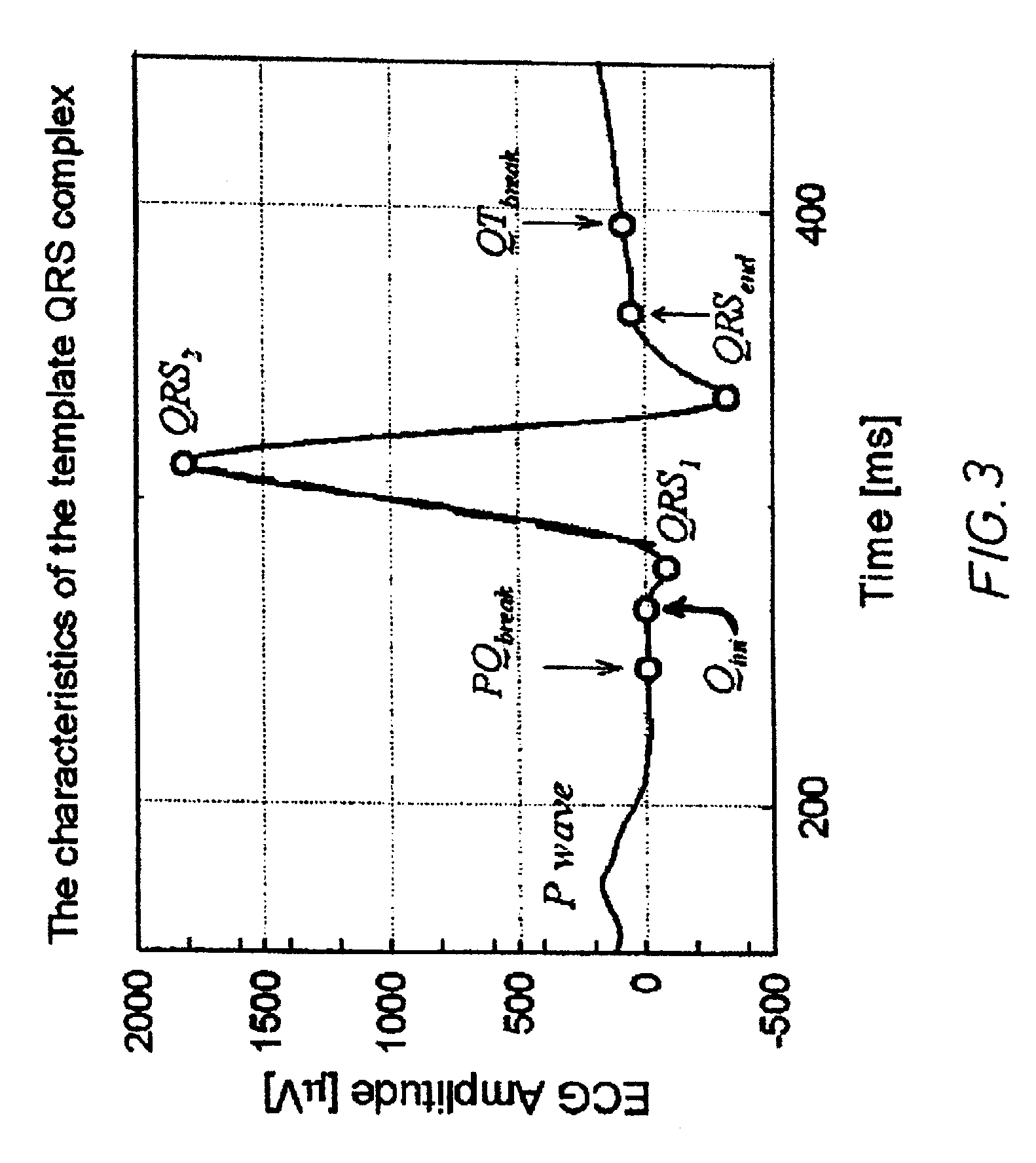Multi-channel system for beat to beat QT interval variability
a multi-channel system and qt interval technology, applied in the field of electrocardiography, can solve the problems of affecting reproducibility, time-consuming and laborious human intervention steps, and the limitations of existing software programs, so as to reduce the overall effect of noise, reduce the effect of noise, and rapid and regular updating
- Summary
- Abstract
- Description
- Claims
- Application Information
AI Technical Summary
Benefits of technology
Problems solved by technology
Method used
Image
Examples
Embodiment Construction
[0027]The present invention uses a software program to analyze multilead ECG signals of a conventional ECG in real-time or stored for subsequent analysis. One advantage of the system of this invention resides in the fact that it analyzes a plurality of received ECG signals simultaneously and automatically without the need for an operator to select and define trigger points on or near the QRS, T, or P waves. The system automatically calculates various parameters from the received ECG waveforms related to the electrical depolarization and especially repolarization of the cardiac chambers that helps to differentiate diseased hearts from non-diseased hearts. The system also uses certain signal analysis techniques to reduce the effects of noise, jitter, and other deliterious effects which presently plague known systems.
[0028]To accomplish these goals, the system measures and analyzes the voltage-time data for any three or more channels of data that contribute to the conventional 12-lead ...
PUM
 Login to View More
Login to View More Abstract
Description
Claims
Application Information
 Login to View More
Login to View More - R&D
- Intellectual Property
- Life Sciences
- Materials
- Tech Scout
- Unparalleled Data Quality
- Higher Quality Content
- 60% Fewer Hallucinations
Browse by: Latest US Patents, China's latest patents, Technical Efficacy Thesaurus, Application Domain, Technology Topic, Popular Technical Reports.
© 2025 PatSnap. All rights reserved.Legal|Privacy policy|Modern Slavery Act Transparency Statement|Sitemap|About US| Contact US: help@patsnap.com



